
Vachier-Lagrave Wins Three-Way Playoff: 2022 Superbet Chess Classic Romania, Day 9
The ninth and final round of the Superbet Chess Classic delivered the results that allowed the viewers a spectacle of a three-way playoff.
GM Maxime Vachier-Lagrave beat GM Alireza Firouzja to catch up to the American duo of GMs Levon Aronian and Wesley So, both of whom drew their games.
The resulting playoff was a rapid-play round-robin. In the end, the winner was Vachier-Lagrave, but it was not without a thousand anxious moments.
The next event of the Grand Chess Tour will be the 2022 Superbet Rapid and Blitz Poland which starts in Warsaw, Poland in just a few days on Thursday, May 19, at 4 a.m. PT / 14:00 Central Europe.
How to watch?
You can follow the 2022 Grand Chess Tour with Chess.com commentary on Chess.com/TV or on our Twitch channel. You can also catch all our live broadcasts on YouTube.com/ChesscomLive.
Follow the 2022 Superbet Chess Classic Romania games live on our dedicated page on Chess.com/events.
Round 9
Already in the post-game interview, after his miraculous endgame save against GM Ian Nepomniachtchi, Aronian hinted that he was not going to go all-in to win in his final-round game against tail-ender GM Shakhriyar Mamedyarov.
Saying that he did not go all-in is the nicest possible way of saying that he definitely did not try to win the game at all. Very quickly, the players started chopping wood and they never really stopped until they found a way to repeat moves.
The requirement for co-leader Wesley So was clear: Do not lose! GM Leinier Dominguez, on the hand, would have loved to conclude his event with a full point to jump even further up the tournament table.
With the opening preferences of both players quite well-known, it was not a surprise when a line of the Italian Game arose on the board.
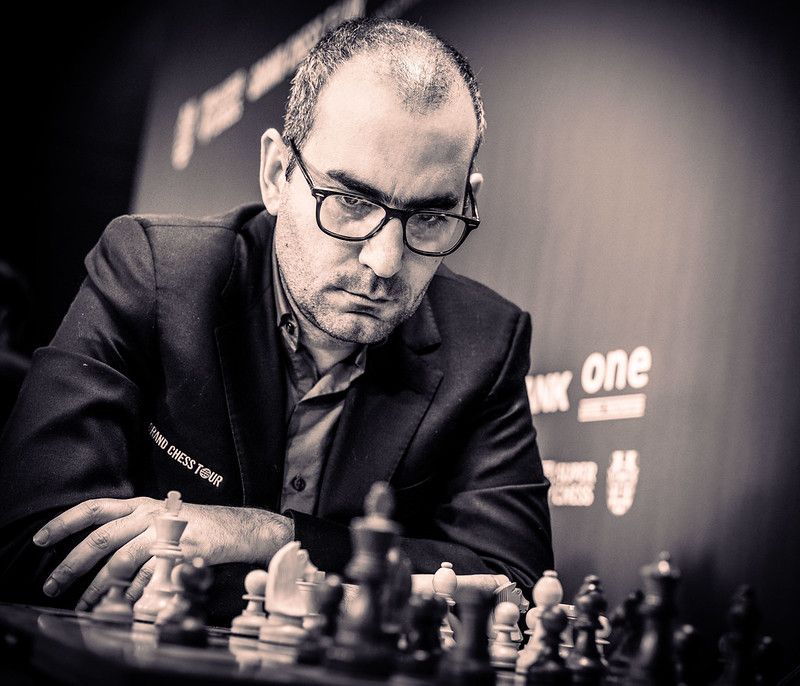
White gained a tiny edge that he nurtured until about move 25, when his 25.Nf1?! and 26.Ra4?! allowed Black to comfortably equalize and even gain a slight initiative.
It slowly but surely emerged that Black had the upper hand and seemed like he could comfortably play for more without risking anything. But then, rather puzzlingly, So offered a repetition of moves to which Dominguez happily acquiesced, as he no longer had any realistic winning chances.
This tournament has been a coming out of sorts for Romanian GM Bogdan-Daniel Deac who, ahead of the last round, had scored a respectable 4/8, something he undoubtedly would have been very happy about ahead of the tournament, but it could have been more if he had capitalized on his advantage against Dominguez. It could also have been considerably less if Firouzja and Aronian had taken advantage of their obvious advantages against him in previous rounds.
Ahead of the beginning of the play, GM Florin Gheorghiu, the de facto leader of Romanian chess in the 1960s through the early part of the 1980s, came to greet Deac.

In the post-game interview after round eight, Deac had announced his strategy against GM Fabiano Caruana, to "play well."
He definitely played solidly, despite Caruana's best efforts to complicate matters right from the get-go, using the same line that GM Richard Rapport had played against Aronian in round one, but instead giving preference to 7...Qc7.
The players continued along known theory beyond move 20, and in the process, exchanged quite a lot of material. Eventually, they ended up in an endgame where Caruana was a pawn down but had the bishop pair, which provided full compensation. Unfortunately for Caruana's ambitions of playing for a win, the material was so limited that it was nearly impossible to make progress. And with Deac sticking to his game plan of playing well, Caruana had to settle for a draw.
It is safe to assume that both Richard Rapport and Ian Nepomniachtchi were entirely dissatisfied with the outcome of this event. Both had chances to score far more points, but each suffered from a variety of individual maladies that wrecked their events. For Rapport, two cases of severe chess blindness cost him two losses in games where he should have scored at least 1.5 points. Nepomniachtchi had been bitten by a speed demon that threw away opportunities left, right, and center. To account for how many points that problem cost him, you would need an advanced degree in accounting, which I don't have, but it was a lot.
Under normal circumstances, two such players would find a way to draw quickly in the last round, but apparently, neither the circumstances nor the players were normal because they made a fight out of this game, and it perfectly illustrated why their respective tournaments turned out the way they did.
In a Nimzo-Indian with 4.Qc2, the players bashed out a bunch of moves that lead to a position that was roughly equal. Nepomniachtchi however, started playing inaccurately, first with 15...Nb8?!, then with 19...Nd7?!, and finally 22...Nc5??, the latter being the right idea but also the wrong move order. This exchanged a worse position for a completely lost one. Coincidentally, his 22nd move was played after Nepomniachtchi's longest think of the game up to that point!
Luckily for the Russian, Rapport did not seize the moment and missed a simple continuation that would have left Black with a hopelessly lost position. In the game continuation, Rapport still had a chunky advantage, but after several inaccuracies, mostly by White, the chances eventually got balanced and a drawn rook ending emerged on the board.
The game between Firouzja and Vachier-Lagrave was an important one for both players. With a win, Firouzja would cement his position as number one in France, pass Vachier-Lagrave on the tournament table, and limit his rating loss, even if he could not remain above 2800. For Vachier-Lagrave a win would mean an opportunity to tie for first and thus enter a playoff and show his new, fellow Frenchman that he should not be counted out when discussing the best French player.
Against Firouzja's 1.d4, Vachier-Lagrave responded with 1...Nf6 and 2...g6, indicating his willingness to enter a Grünfeld Indian Defense. Firouzja took him up on the invitation but did it via the Fianchetto Variation, a much more positional approach than the direct and concrete lines of the Main Lines of the Exchange Variation.

The line chosen by Firouzja is not considered anything special for White but is aimed at reaching a playable position where the best chess player, rather than the best-prepared player, has chances to win. That being said, it did seem that Black equalized rather comfortably.
The position remained balanced until Vachier-Lagrave's visually speculative 27...Re3?! which was designed to rock the boat so that the game would not just enter a liquidation phase where a draw would become inevitable.
When Firouzja reacted somewhat inaccurately, Black got what he wanted: a position that was unbalanced but not worse for himself and where the b-pawn could represent chances to win the game at a later stage. As the players entered the time trouble phase up to move forty, Firouzja completely miscalculated when playing 33.e5??, allowing Black a clear advantage with 33...Ng4! which forced the play into a line where Black's b-pawn would become an important asset.
After the time control, Firouzja made another mistake in 42.Nxb2, giving up his knight for Black's b-pawn, but doing so under something less than ideal circumstances.
In the phase that followed, Vachier-Lagrave had to convert an endgame with rook and three pawns vs rook, knight, and two pawns, all on the kingside. Finding the right set-up for Black was not entirely easy and, while he struggled a little initially, he soon found a setup that stopped White from exchanging any further pawns. Then he could decisively penetrate with the king, forcing White's resignation.
With three players in the playoff, they would play a mini round-robin with 10 minutes and a 10-second increment for each game. If two or more players were even after the round-robin, the winner of the tournament would be decided via blitz armageddon games.
The drawing of lots gave So the white pieces against Aronian, and Black against Vachier-Lagrave, while Aronian would play White against Vachier-Lagrave. The games would be conducted in this order.
So-Aronian
In a Queen's Gambit Accepted, White opted for the sharp 3.e4, rather than the tame line we have overwise seen throughout the tournament. While White's 10.Ndb5?! was not the best, Black's response with 10...Be6? was a major mistake, allowing White a clear advantage that So managed to grow into something more substantial with precise play.
White entered a pure minor piece ending with two extra pawns, which should have been a trivial win, but as we have seen in his games against Firouzja and Nepomniachtchi, Aronian can be incredibly resourceful. A couple of times, it looked like Aronian was pulling another Houdini escape out of his leprechaun socks.
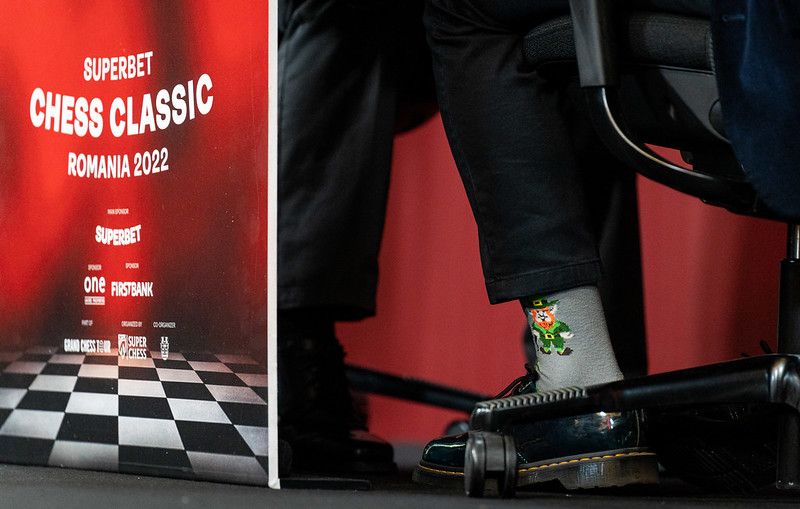
Eventually, So converted his material advantage with a steady hand to get off to a perfect start in the playoff.
Vachier Lagrave-So
So would need at least a draw to eliminate Aronian, while a win, of course, would make him the overall winner of the event. The game, however, would become one of the craziest games I have seen in a long time.
The game opened with 1.c4, which is a departure from Vachier-Lagrave's usual 1.e4, but it is a move that is frequently employed when wanting to avoid heavy opening preparation and just play chess. However, So still managed to equalize smoothly against White's choice of the Reversed Dragon Variation.
In the middlegame, Black took over the initiative and started building pressure against White's somewhat vulnerable king. When Vachier-Lagrave then played inaccurately, the advantage took a more concrete shape, allowing Black a large, if not decisive, advantage. But the Frenchman kept coming up with defensive resources to keep the game going, particularly his cold-blooded 28.h3!? and later 35.Ke1!! were something out of the ordinary.
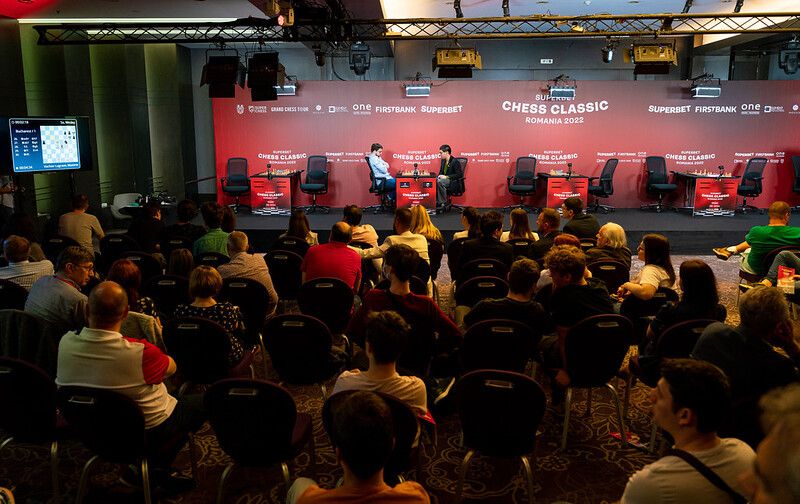
The American had several chances to put Vachier-Lagrave away, but as the time ran low on the clock, the mistakes and blunders were everywhere, and both sides had winning, drawn, and lost positions until So lost on time while making yet another blunder.

Understandably, So was very disappointed after this loss. He could have ended the tournament if he had just capitalized on one of his opportunities to win the game.
Aronian-Vachier Lagrave
If Aronian could now win the game, the players would be heading into two rounds of armageddon games, whereas a draw would cement the tournament victory for Vachier-Lagrave.
Against the Frenchman's Sicilian Defense, Aronian decided to avoid the Najdorf, well aware that few players on this planet know the Najdorf as well as Vachier-Lagrave does. Aronian's weapon of choice was 3.Bc4, a move he has played numerous times before, including against Vachier-Lagrave. Black responded with a new idea: 4...Nc6 followed by 5...h6, perhaps hinting at the possibility of playing ...g7-g5 at some point.
White started pushing his own kingside pawns forward, but when Black countered with 14...d5, he was already comfortably better, and the advantage kept growing, particularly after he fired 25...Ne4! off.
That White did not completely collapse was due to a mix of Aronian's resilience and Vachier-Lagrave's inability to find the decisive knock-out punch, of which there seemed to be several.
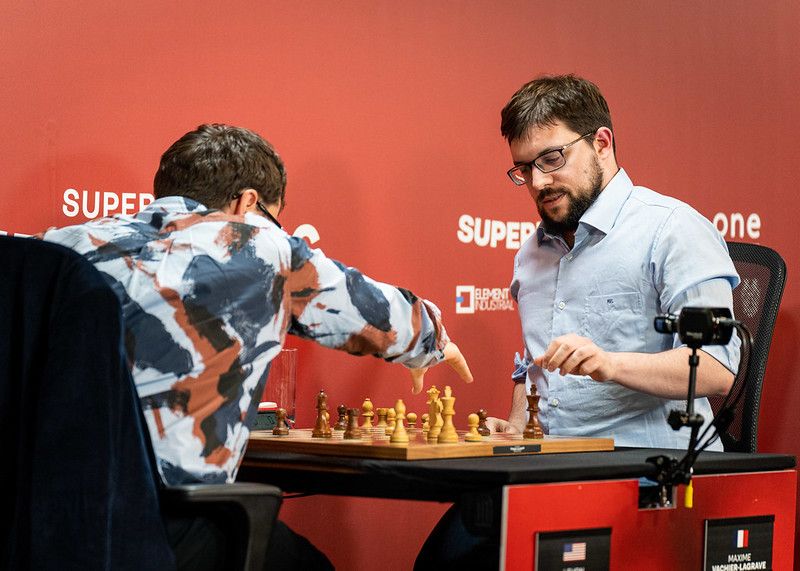
As the game progressed, more and more of Vachier-Lagrave's advantage went by the wayside as Aronian creatively defended himself and kept the game going. Although never better at any point, Aronian had equalized several times, but as he needed to win the game, he had to take chances to make it happen.
In the end, Aronian made the final mistake and had to resign.
Final Standings
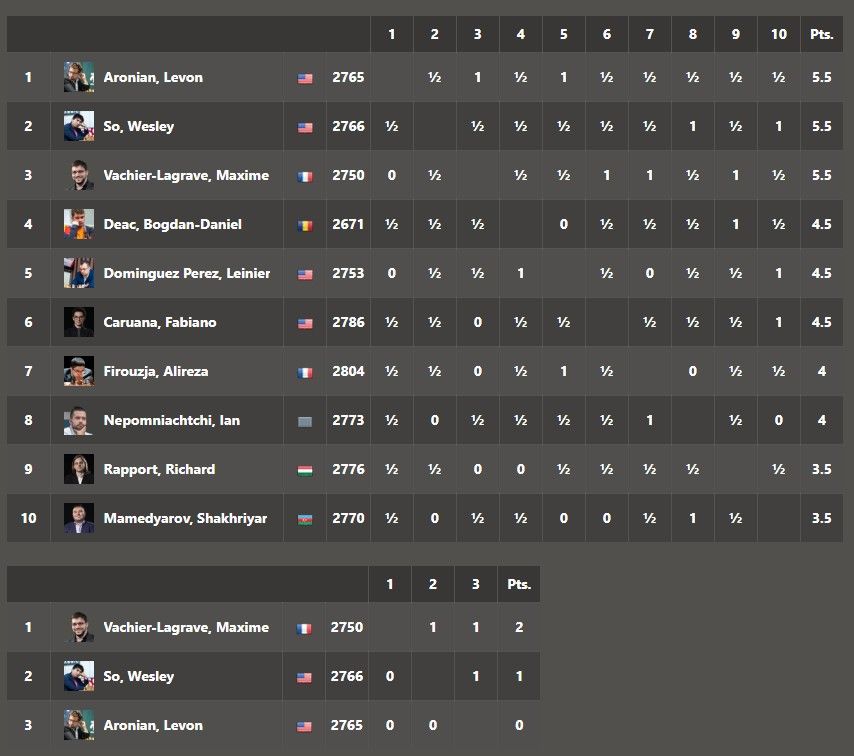
All Games Round 9 & Playoff
Previous coverage:
- Aronian's Great Escape: 2022 Superbet Chess Classic Romania, Day 8
- Wins For Firouzja, Mamedyarov, Vachier-Lagrave: 2022 Superbet Chess Classic Romania, Day 7
- Aronian Wins Miniature, Joins Lead: 2022 Superbet Chess Classic Romania, Day 6
- Caruana Strikes: 2022 Superbet Chess Classic Romania, Day 5
- Wesley So Wins Again, Takes Lead: 2022 Superbet Chess Classic Romania, Day 4
- Deac Beats Rapport, Joins Lead: 2022 Superbet Chess Classic Romania, Day 3
- Nepomniachtchi Beats Firouzja: 2022 Superbet Chess Classic Romania, Day 2
- Wesley So Wins And Leads: 2022 Superbet Chess Classic Romania, Day 1
- 2022 Grand Chess Tour: All The Information


